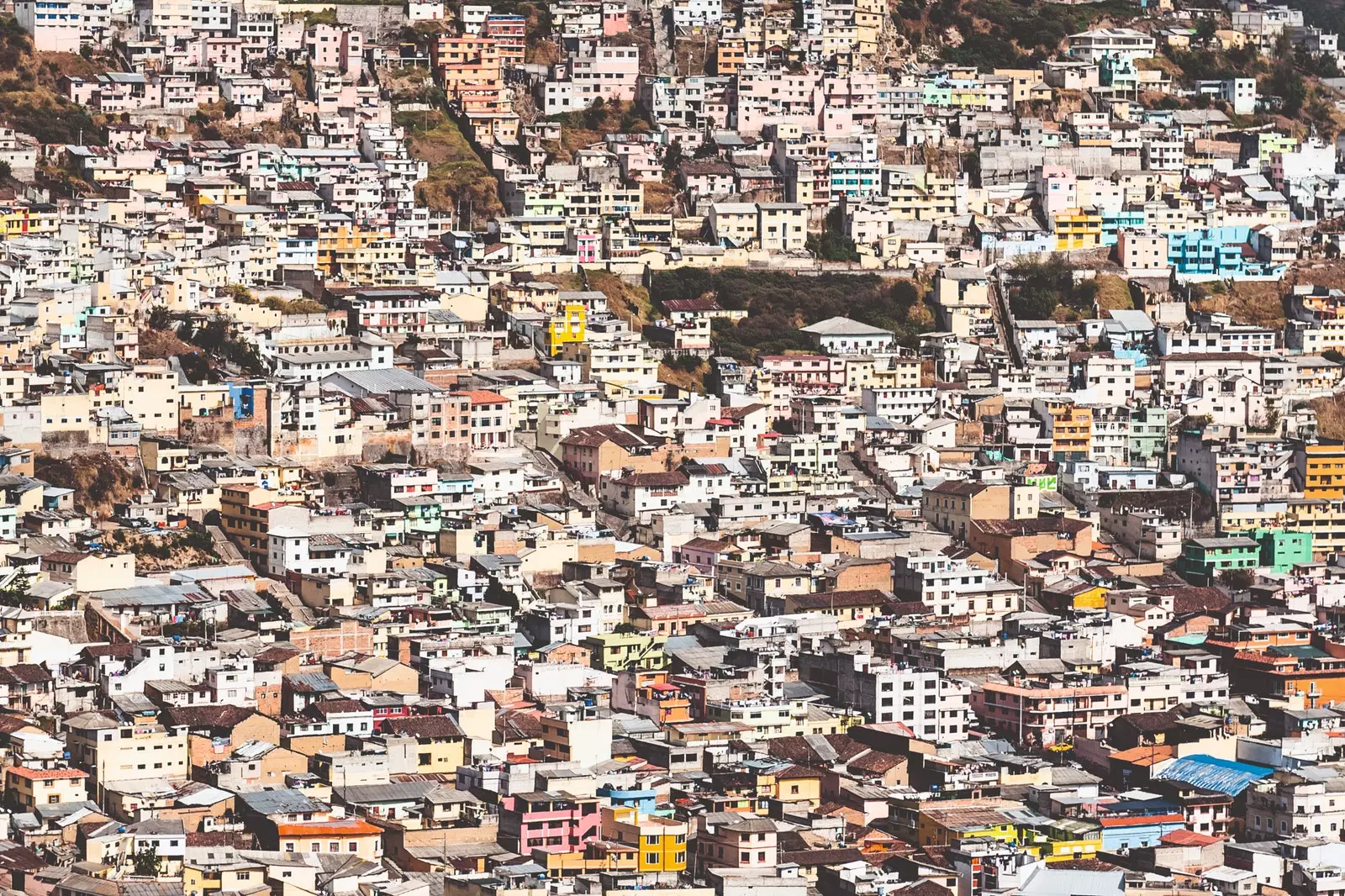
View of Quito from El Panecillo.
The Ecuadorian says of himself that he is the strangest being in the world. He is happy with sad music; he sleeps peacefully among volcanoes and is poor among so much wealth. The city of ** Quito was the first in the world to receive the title of World Heritage Site for its colonial center.** But, in addition to its churches, its theaters and its squares, among the reasons that make it unique are its orography –a privileged geography, in the middle of the meridian zero–, an altitude that gives more than one scare to travelers and a more capricious climate than Quito itself (as the popular saying goes) .
off topic, green and cultural initiatives spring up in Quito, a gastronomy that strives to raise its head to the height of its neighbors and claim the Andean heritage and, of course, the most beautiful and perfect roses in the world.
THE FOREST
Pablo wears a total black look only broken by a cap with the image of the Virgin of Guadalupe. He speaks slowly as he digs into the ground making a hole for a tomato plant in one of the pots he prepares for an urban garden.
The plants to cultivate or decorate the houses of Quito are his specialty, but he also sells seeds, fertilizers, manure... and he himself is the 'curator' of the art exhibitions that are exhibited in the premises, generally prints, oil paintings and recycled art objects made with the plastic bottles that the neighbors themselves bring.
Probably, if we go back in a year, Pablo will no longer be in La Floresta, because the owners of the land where it has the premises will have started to build some building of apartments in this neighborhood whose prices move at a speed inversely proportional to that of the inhabitants of this parsimonious city.
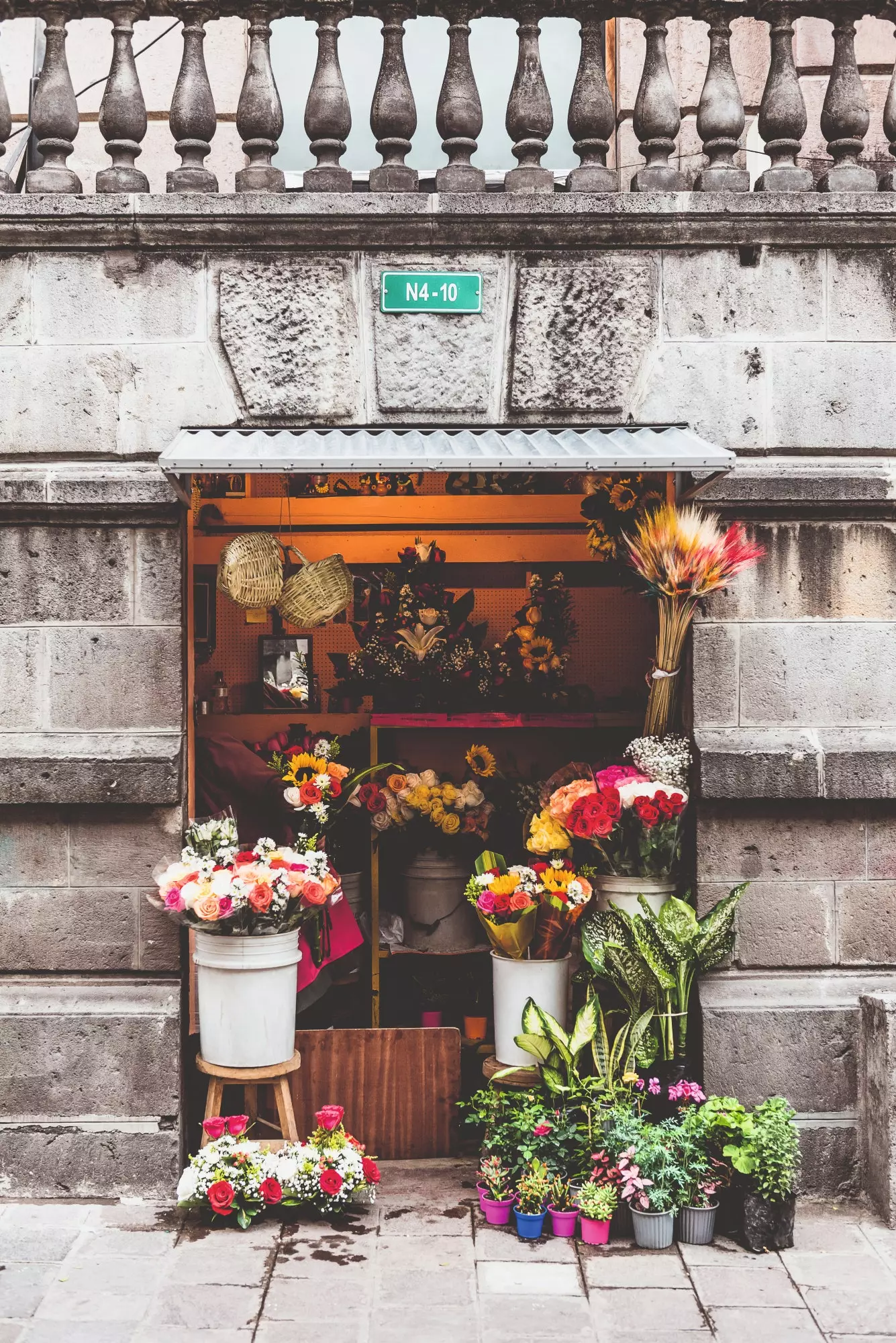
Florist on Calle Benalcazar in Quito, in the neighborhood of Floresta.
Pablo can pay his rent now, but he knows his days are numbered. In the last five years he has seen how the neighborhood, the first together with La Mariscal to develop beyond the colonial center, it has totally changed its face. For many, for good. For others, for worse. Because the cafes, restaurants, shops and art galleries that now occupy the old low mansions with gardens, in addition to culture they have also brought noise, gentrification and yes, price increase in rents, until now quite affordable.
The Eighty-half, a independent cinema with a felliniesque name where you can see alternative films, non-commercials and documentaries with a glass of wine, he was the first to plant the flag. The one that attracted a community with a strong interest in culture here.
Today, between murals and colored graffiti, the streets named after Spanish toponyms (Madrid, La Coruña, Mallorca, Valladolid...) welcome endless shops and cultural proposals that attract a local audience and many foreigners.
The Trude Sojka Cultural House is perhaps the most curious of all of them because of the history behind it, the last thing one expects to find in Ecuador. The Czech-Ecuadorian artist who gives her name lived there, a pioneer expressionist in recycling art and who was saved from the Holocaust.
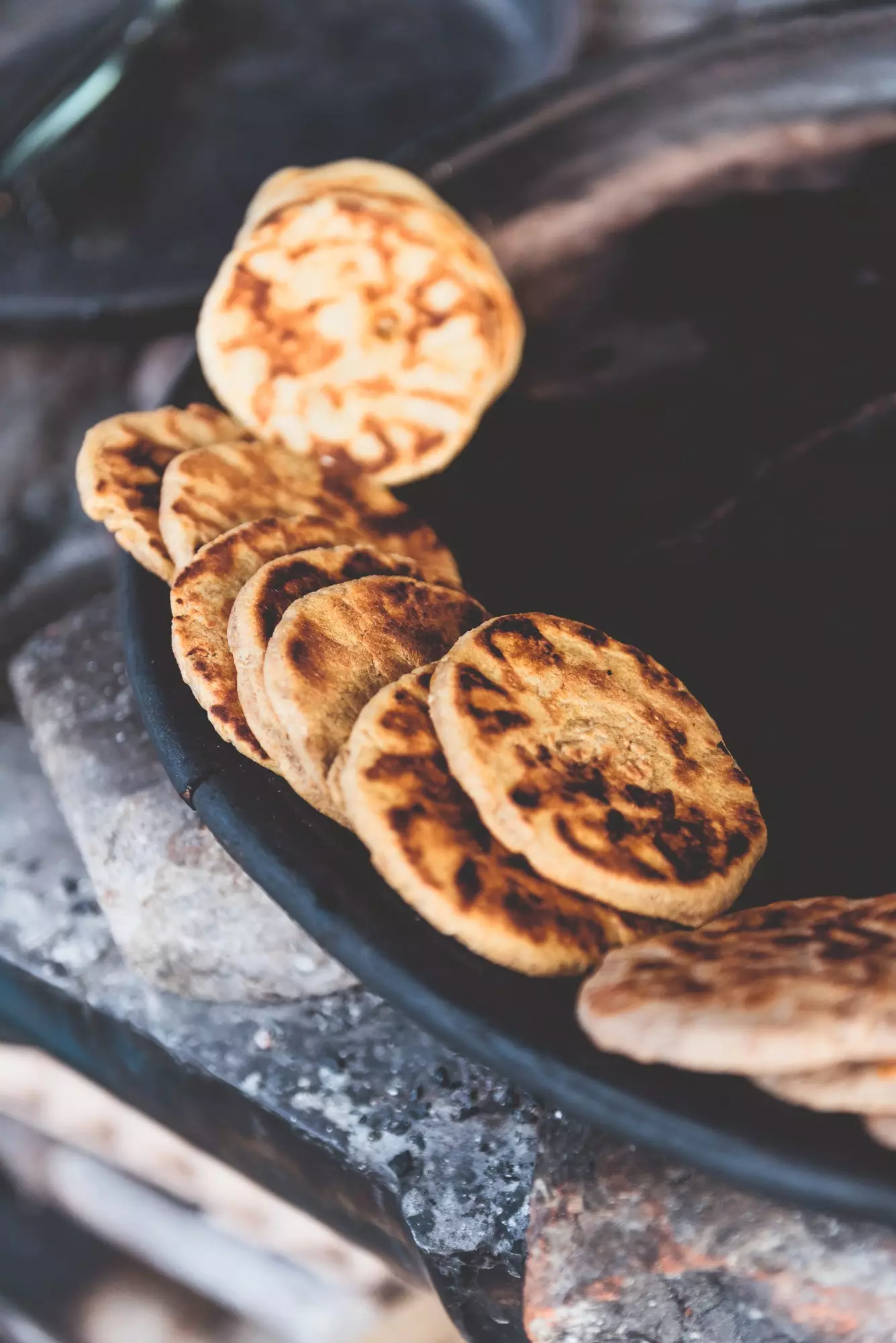
Street food in the neighborhood of La Floresta.
It is not surprising that she is like a kind of hero in the neighborhood since, in addition to culture, The other great spearhead at La Floresta is sustainability. To realize this concern, it is enough to take a walk, also on market day, and take a look at its Facebook page to check all the open centers of activities and initiatives that are emerging every day.
Almost every cafes and restaurants are sourced from local producers and they take chest of Andean roots. Like Warmi, which means woman in Quechua; Salinerito, which only sells fair market products, and all those who opt for a vegetarian and vegan offer (Úpala, Formosa and Gopal).
Other hybrid businesses are the La Cleta café (where everything is made from recycled bicycle parts) or the Fullgur bike workshop (where they design custom bikes), independent designer fashion stores such as Libertina and cooperatives in the style of La Nueva Comuna, that brings together the work of various craftsmen.
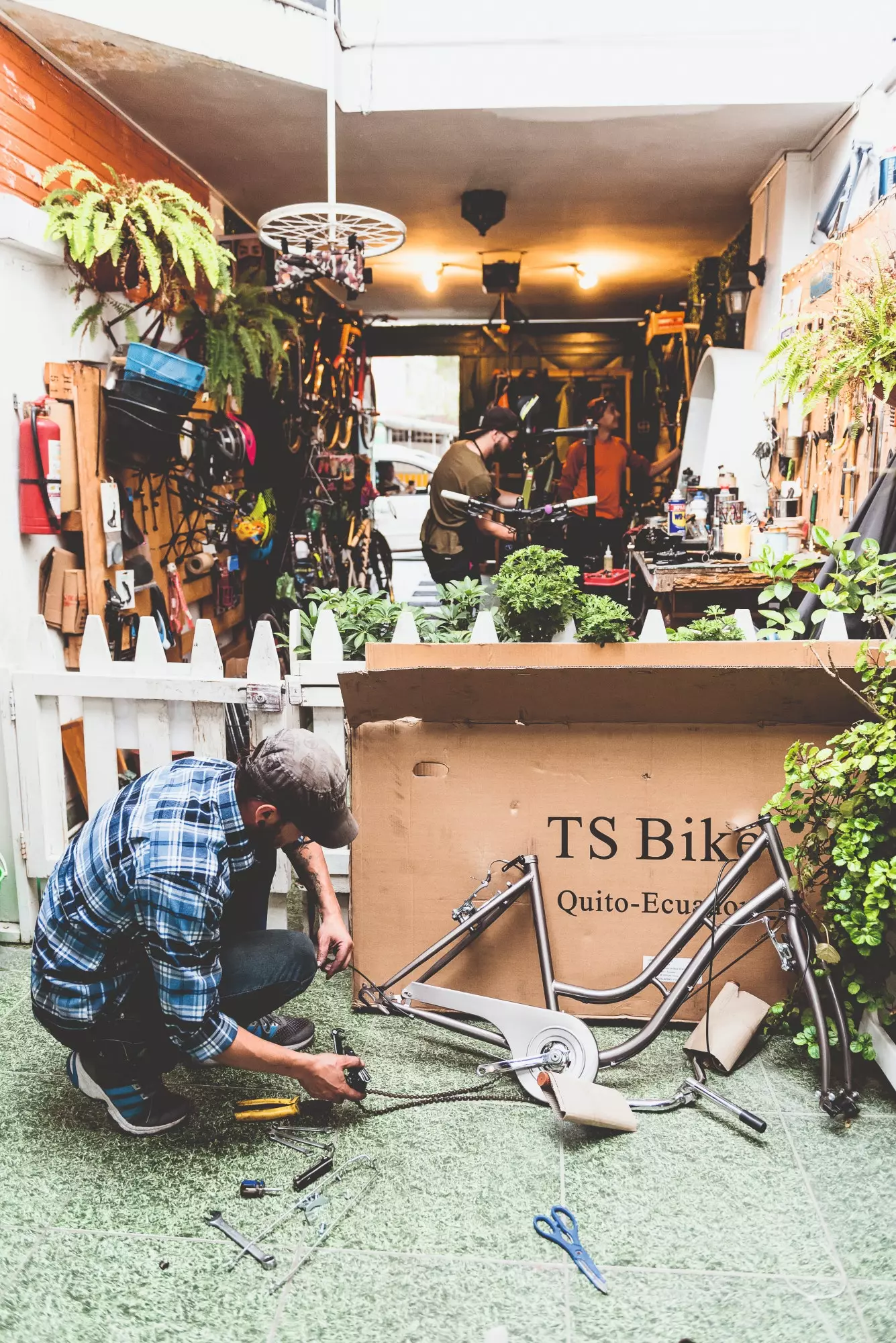
In the Fullgur bike workshop they design personalized bikes.
YUNGUILLA
To get to Yunguilla from Quito it takes about an hour. and for it You have to go through the Middle of the World, an expression that can be grandiloquent and bravado, but on this occasion it is literal. This is the name of the city where it is located the famous point of latitude 0, the equator line.
The road changes the volcanoes for arid landscapes and winds until it becomes a green landscape again. Not so long ago, it wasn't like that. This forest is the result of reforestation of the project of the fifty families that make up the community of Yunquilla. From the dream of the "17 crazy people" who decided to change the old activity, the felling of trees and coal (and the smuggling of water), for the recovery of the cloud forest and sustainable tourism.
This happened 23 years ago with the help of the Maquipucuna Foundation and, little by little, alone and, to a large extent, by the overwhelming push of women, It was taking shape until it became what it is today, a rural destination that receives around 4,000 tourists a year.
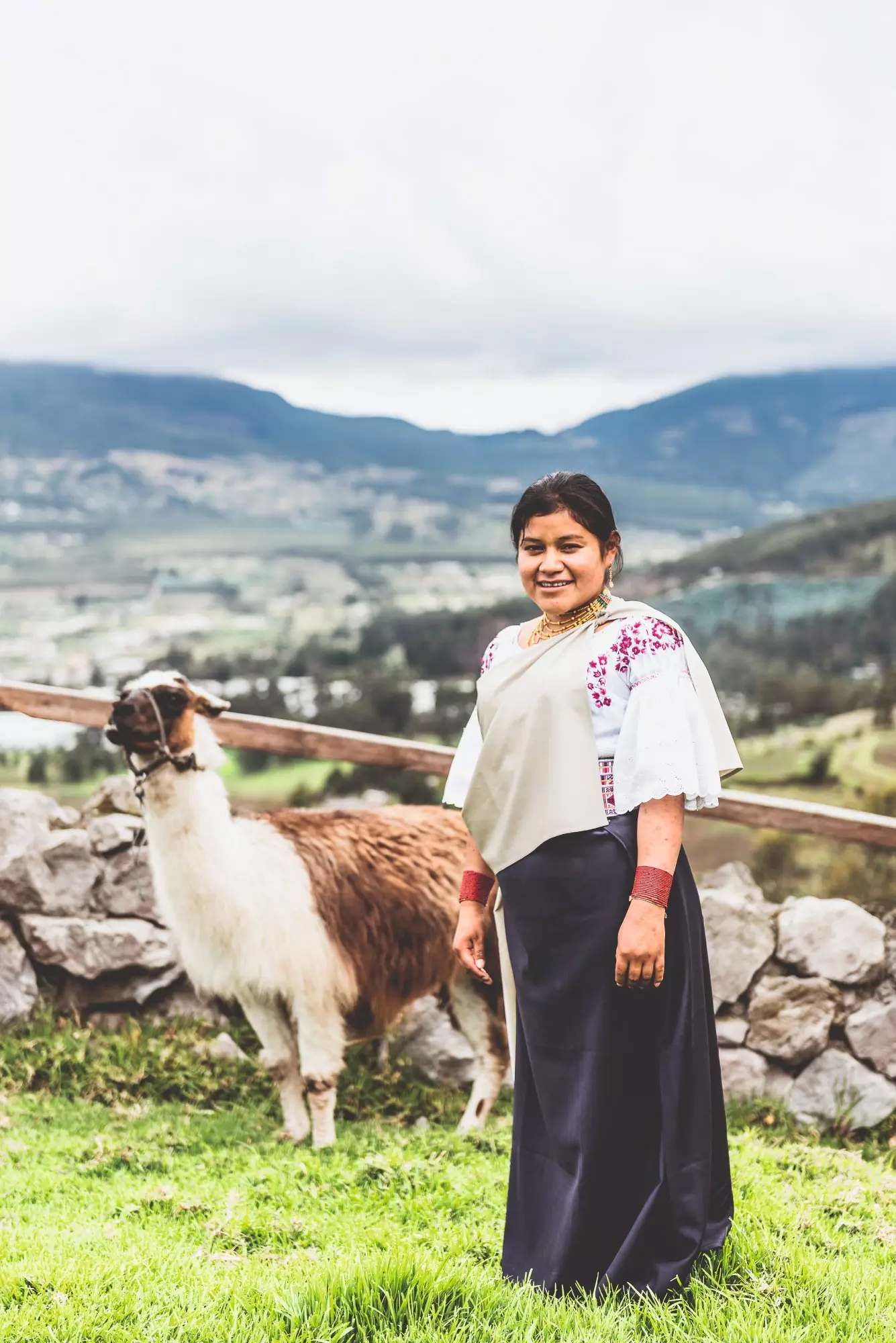
Woman in the surroundings of Lake Cuicocha.
After training as guides, studying languages and refurbishing the accommodation, the first to arrive were some Dutch who stayed in the houses of the locals themselves. The crockery was multicolored, with glasses and plates that each neighbor had brought, and they themselves did not know very well what to expect from all this.
But the Dutch did not pay attention to details, they ignored inconsequential issues and went to the important: the views of this valley -in the surroundings there are a total of seven volcanoes-, the tranquility that is breathed there and the authenticity of living with families. Also the walks through the old culuncos (the old paths that were used for the exchange of products), the horseback rides and the reality bath of Ecuador that visiting this community supposes.
Today it is no longer just "17 crazy people" who are committed to this project, but all, the 180 neighbors, who are making the destination more complete every day and including new initiatives such as an organic garden, a homemade jam factory and a cheese factory.
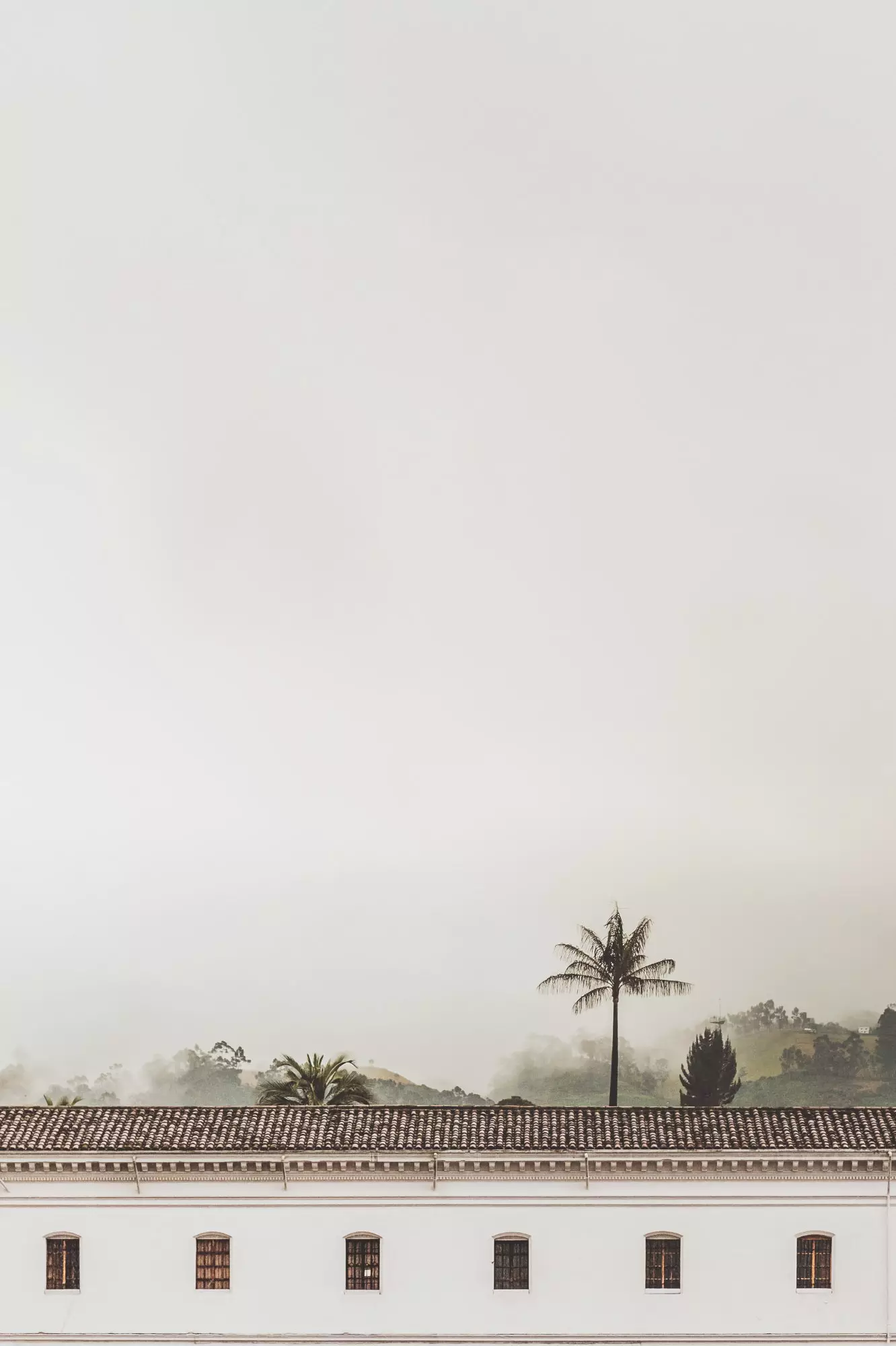
Plaza de San Francisco in Quito.
COMPANY TREASURY
Russia and Ecuador have woven a strange –and unexpected– love relationship that is expressed with flowers. They are the famous roses of Ecuador (the country's fourth export product after oil, cocoa and shrimp) that are unrivaled in the world.
It is not subjective data. We are in a place of fertile soil that meets exceptionally unique conditions: here, in the middle of zero latitude, the hours of light per day are the same as the hours of darkness (12 of each), which also have a special (parallel) and homogeneous effect throughout the year.
This allows flowers to grow in almost unlimited length, something that Russians value above all else when decorating their towering vases in Moscow, St. Petersburg or Siberia with roses over a meter and a half.
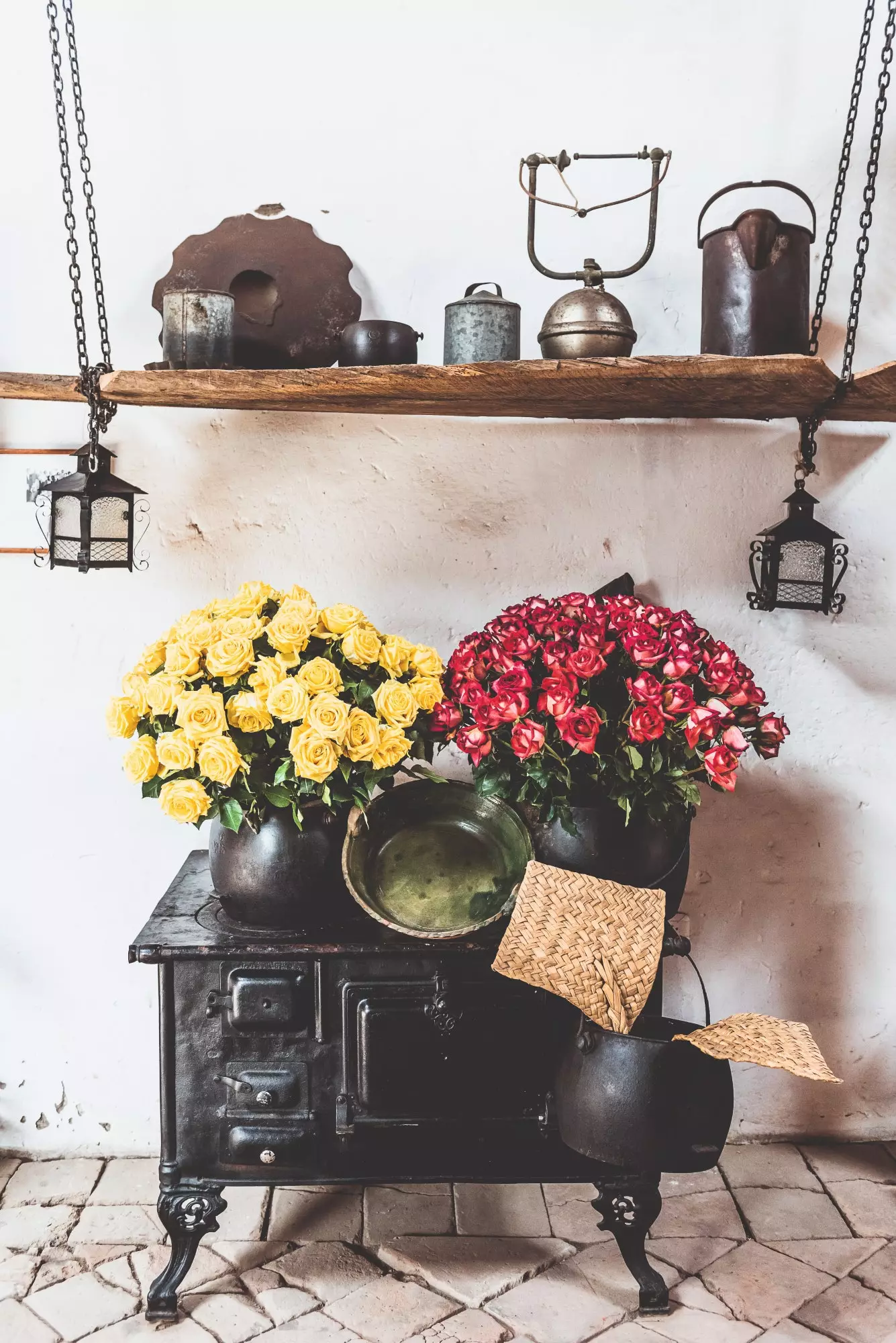
Floral detail at the Hacienda de la Compa a.
all that happens in Cayambe, already in the province of Imbabura, on whose road street vendors offer the incredible bargain of 24 roses for one dollar, something that can only be explained if you visit one of the haciendas where they are produced, such as Hacienda La Compañía.
Here they are grown, then flown to Amsterdam and auctioned off to supply the whole world. Are 38 varieties created by breeding, something like the cellar masters of roses, who design them expressly for each market, and to whom royalties must be paid for each of the models.
Where genetics does not reach, natural dyes and sprays arrive, which manage to make the impossible requests of the small public come true, the one that demands pe talos with all the colors of the rainbow on a single stem, golden or multicolored.
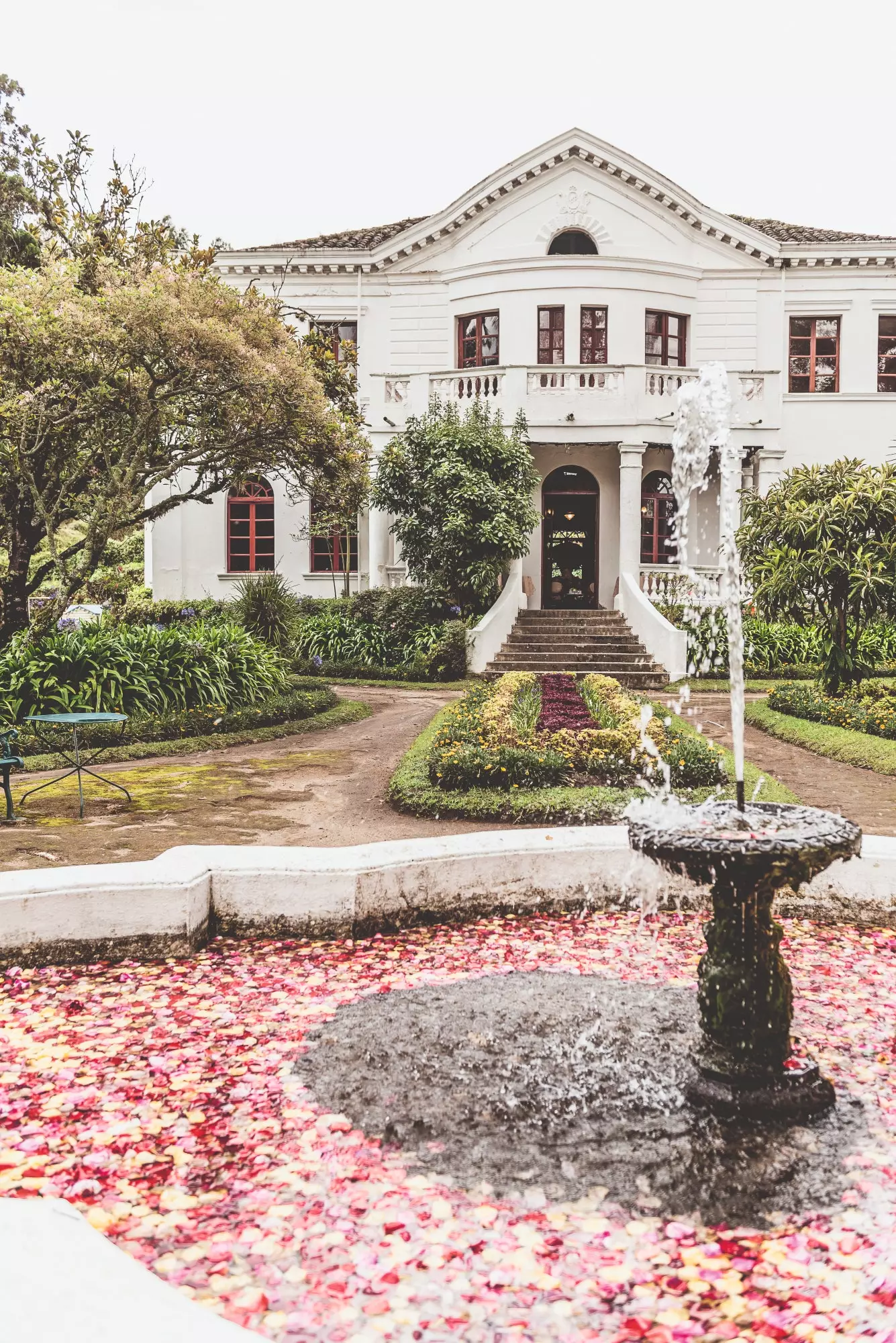
The beautiful Hacienda de la Compa a, in Ecuador.
In the company they work 280 people who are organized as a small city, and its rules have changed the way of life in this area, bringing many social advances. The majority are women who earn exactly the same as men and work-life balance is encouraged (there are nurseries, doctors and a transport service) .
The family that runs it (the sixth generation) also owns the wonderful republican hacienda in French neoclassical style that is on the estate. Surrounded by palm trees and fountains, its interior, perfumed accordingly, has remained intact since the year it was built, 1919. It retains the same papers decorating the walls, the mahogany chairs, the cute oil lamps, the wooden merry-go-rounds that served as toys and the parchment ledgers that are still open on the tables in the room.
The visit includes both slopes, and also that of the chapel from colonial times, a tasting of the famous Cayambe biscuits or **a typical Ecuadorian lunch (fritada, locro, encocadas, seco de chivo...)** served in the original centennial crockery of the house. Because, beyond Quito, this is also Ecuador.
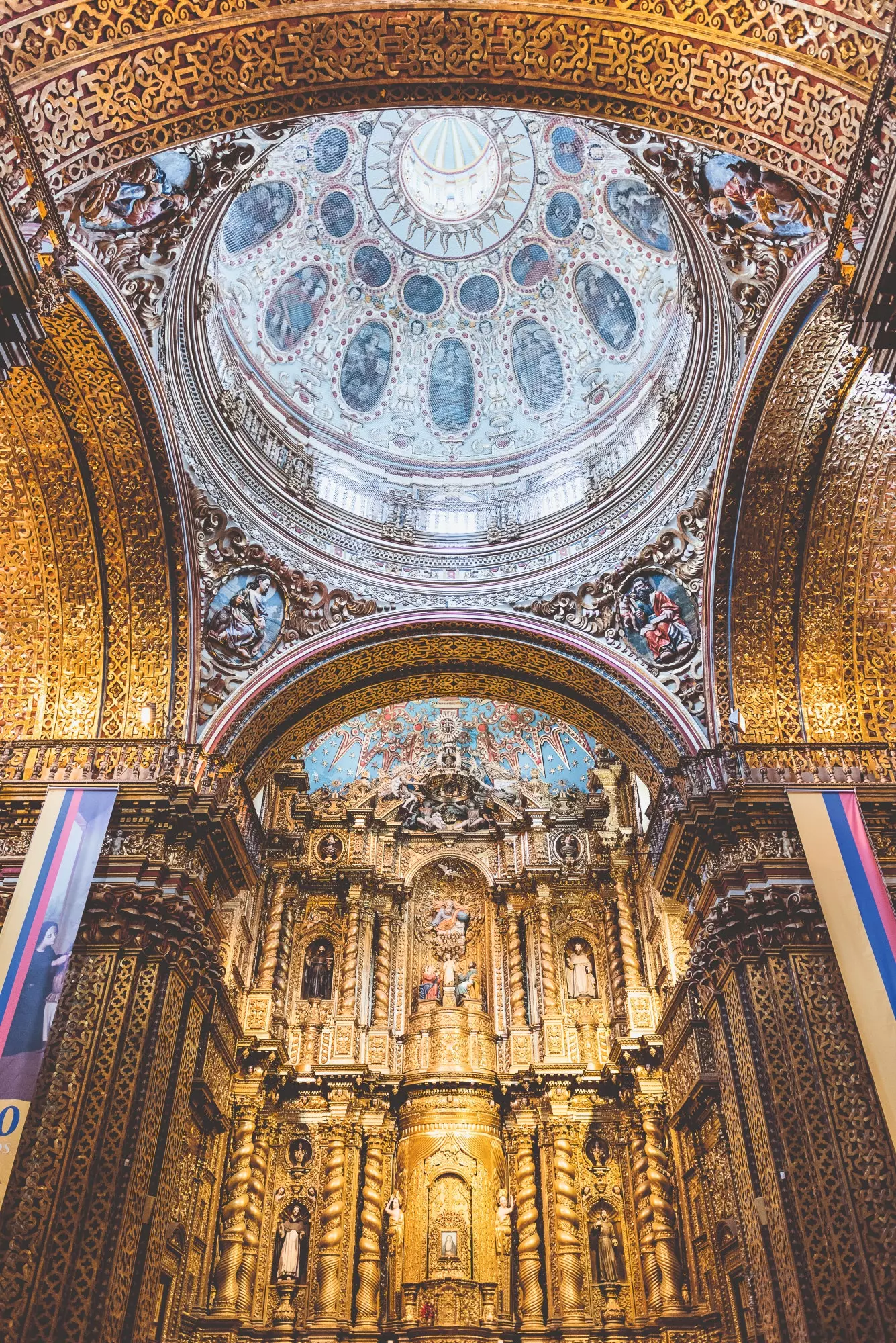
Dome seen from inside the church of La Compa a.
